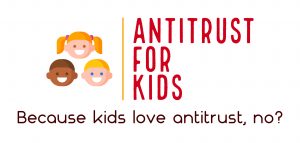Author: Steven Cernak
Years ago when I was working in-house at General Motors, one of my bosses asked just what it was that I did at all those ABA Antitrust Section meetings I attended: “Seems like you just go to nice places and think big thoughts.” He did not mean it as a compliment.
This year, as Chair of the Antitrust Section, I had an idiosyncratic perspective on the Section’s big Spring Meeting last week. I did not get to go to as many panels as I would have liked; however, I did get the chance to moderate two premier panels and interact extensively with numerous foreign enforcers and practitioners. While there were plenty of great panels on the nuts and bolts of antitrust and consumer protection law, I think the key takeaways of the week for practitioners were some of the “big thoughts” – despite what my old boss would say.
Dynamic Complexity
I organized and moderated a panel under the title “Have We Been Doing It All Wrong?” with panelists Nicolas Petit, Neil Chilson, Diana Moss, and Koren Wong-Ervin. Here was the premise: If antitrust law is supposed to protect competition and the competitive process for the good of some group, whether consumers, workers, citizens, or others, shouldn’t we have a good idea of how that competitive process works? And do we?
Antitrust law generally uses the neo-classical economics that so many of us learn in Econ 101 — supply, demand, prices adjust to create market equilibrium, inputs go in a black box that creates outputs. The panel discussed alternative views of competition, one being dynamic competition. Broadly speaking and in my own words, this view sees innovation as the driver of wealth creation and that innovation happens in a longer term, more complex way than captured by neo-classical economics and some antitrust precedent.
A related concept discussed by the panel was complexity economics. Another concept resistant to a simple definition, I describe it as viewing the economy less like a black box and more like an ecosystem, constantly evolving, dynamic, not necessarily ever in equilibrium, and where the participants are always adjusting their actions based on the outcomes that they create. We also discussed emergent order, thinking more like a gardener or park ranger, and even a taste of Austrian economics with some references to Hayek’s Pretence of Knowledge speech. The panelists tried to explain how these concepts, which might be unfamiliar to many antitrust practitioners, might be applied to real cases.
The panel was meant to bring to the audience’s attention a conversation that I and others have been having for years and that will continue. Loyal readers of these posts will remember my reviews of books by Petit and Chilson and other posts on complexity. The conversation continued the next day with a panel sponsored by the Dynamic Competition Initiative and BRG on dynamic competition and innovation. And Section members will get an entire issue of the Antitrust Law Journal devoted to articles going “Beyond Dynamic Competition” later this month.
Here are my summaries of three key takeaways for practitioners. First, Petit made the point that not all industries or companies or the actions they take are examples of dynamic competition; therefore, one research task could be to determine when these concepts make sense to apply. Second, some of the commenters at the DCI panel suggested a need to better understand how innovation occurs in that black box called a company, which might require antitrust folks to study more managerial economics from B-School economists than we have in the past. Finally, I think all the panelists made the point, at least implicitly, that application of any or all of these concepts might lead to more or less antitrust enforcement. All good reasons why antitrust practitioners, enforcers, and policy makers should become more familiar with these big thoughts.
Principles Discussed Globally
As Chair, I had the opportunity to have some informal conversations with many non-US practitioners and enforcers. I also moderated the Enforcers’ Roundtable with the head of the National Association of Attorneys General Multistate Antitrust Task Force and the top enforcers for the EU, Germany, and Brazil. Unfortunately – for the Section but also the antitrust community and them – the top enforcers at the FTC and DOJ chose not to participate in the Section’s Spring Meeting. The attendance and participation of others at the two US agencies also was drastically reduced.
I put the remarks of the non-US attendees in two categories. First, some noted the unfortunate irony of prior US enforcers preaching the need for other countries to apply principles, especially economic ones, in competition law enforcement when the current US enforcers seem to be backing away from any, or at least those same, principles. Personally, as discussed below, I do think the US enforcers will continue to take a principled approach to enforcement, although the principles might be subtly different; however, I think the US enforcers missed a great chance to explain themselves to a large, global audience. Tough to change first impressions.
Second, non-US attendees, as always, appreciated the numerous opportunities to interact with US-based colleagues, collaborators, and current or potential clients. They would have preferred to also interact with US enforcers. Their absence raised concerns that US enforcers might pull back on other formal and informal methods of cooperation, such as the International Competition Network or ICN. The presence of Mario Monti, longtime Italian and EU politician and competition enforcer and considered an ICN founder, at the Spring Meeting only highlighted the drastic changes felt by those outside the US.
Perhaps EU EVP Teresa Ribera captured both categories best with this statement (taken from an unofficial summary) at the Enforcers’ Roundtable: “Ensuring functioning markets, protecting consumers, and fighting abuse — while respecting the rule of law — takes trust and cooperation. Regionally. Globally. We’re in this together.” I think the global cooperation will continue but this year was the first time in many years when that assumption was questioned.
Hillbilly Antitrust
One of the benefits of being in DC during Spring Meeting week after an election is the chance to hear some initial thoughts from new enforcers on their priorities. Sadly (for many, as explained above), new DOJ AAG Gail Slater chose a different, smaller event last week to make some initial remarks. While some suggested the term “MAGA Antitrust” to describe the policy outlook for the new Trump Administration, Slater said she preferred “hillbilly antitrust.”
 The Antitrust Attorney Blog
The Antitrust Attorney Blog












